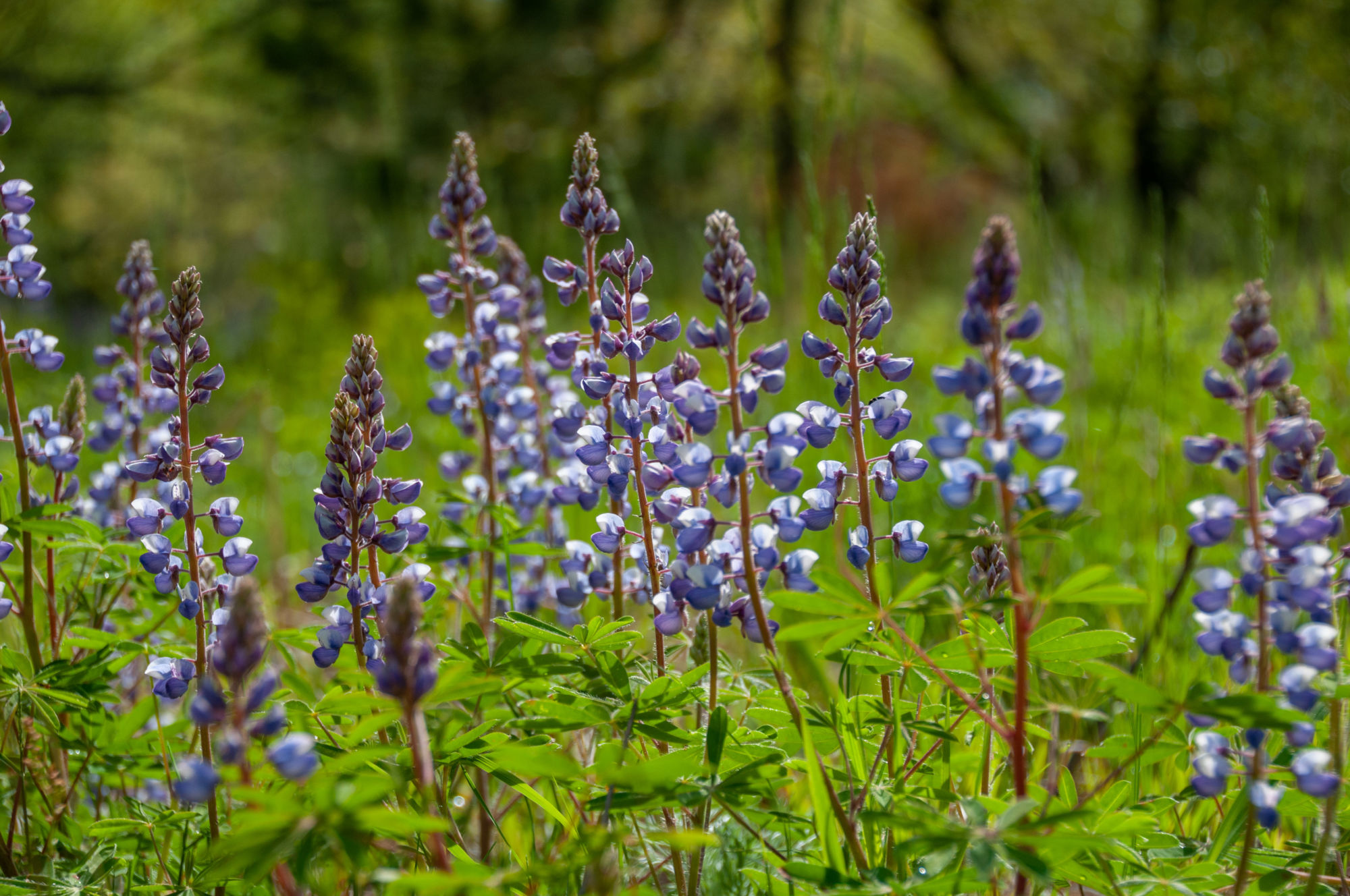
Interview with Michael Pfleghaar
PRESERVED! Artist Interview Series
It’s a comfortable evening at Maas Family Nature Preserve. In addition to a group of volunteers tasked with clearing a new trail, there are several Preserved! artists scattered throughout the prairie, trying to capture the last bloom of lupine flowers in the golden evening light.
While the other artists peck away at a single piece, Michael casually fills a few canvases in the same space of time. He’s quick to create these versions, for they are but a brief impression he plans to flesh out later on.
Michael is primarily a painter, and he works with most mediums. Except, he clarifies after a pause, watercolor. “I really don’t do watercolor.”
Michael was always interested in art. His parents sent him to art classes before he hit grade school. He explains that he chose it for his career simply because, “I’ve had the ability, so it’s my vocation.”
He is the only major artist in his family. While his family always supported his artistic inclinations, that doesn’t mean they understand it.
“You know,” he says, quirking an eyebrow, “I don’t think they really get it. A lot of my work is abstraction, and they don’t know what to say.” He chuckles.
His work is abstract, with bold colors and unique perspectives on everyday items.
“I’m primarily someone who is inspired by objects,” he says. “Most of my work is from man-made materials, so when I work outside I look for some sort of structure.”

These structures may still be man-made, like a barn, but he also looks for trees or boulders to anchor his piece.
“My composition style is off-center,” he says. “I like a bit of imbalance in paintings. I think that makes an interesting picture to view, because it’s not static. It’s constantly moving that way.”
Michael learned plein-air painting from Stephen Duren, a local artist who also inspired fellow Preserved! artist, Kathy Mohl. Michael was a studio assistant to Duren, and the experience inspired Michael to paint more landscapes.
“My approach is not trying to replicate what I see, but to see things that maybe people miss, like the subtle colors in shadows, and exploit those and turn them up,” Michael says, referencing David Hockney’s use of color as another inspiration.
Michael’s distinctive style is not limited to a particular type of painting.
“I change genres a lot and themes,” he explains, which is why he doesn’t have a favorite piece. “I could pick out a piece from each stage of my life that kind of resonates as the perfect example of what I was trying to do with that genre.”
Michael prefers oil for plein-air painting because “It doesn’t dry fast like acrylic, so you can work with it a little longer.” He also prefers basic tools—brushes for putting paint on a canvas, and fingers and rags for removing paint.
“A lot of people think that painting is an additive process,” he says, “but it can be just as much removing paint.”
The process can also involve overcoming artist’s block.
“If I’m not creative, I don’t push,” Michael says. “I do get antsy if it lasts too long. But I’ve also figured out when I’m best. When I have studio days, I make it my priority to do that first, because things tend to flow in the morning.”

He also finds it helpful to get outside in the warmer months.
“I love the whole idea of rebirth in the spring and being outside and enjoying the garden,” he says. “It’s a change of gears for me, and I think whenever you change gears you bring something fresh to the work.”
However, while getting outside to boost creativity is one of the reasons Michael joined Preserved!, it is less helpful in colder months.
“To me, fall and winter is like death,” he says, flatly. “I get very depressed.”
Seasonal depression aside, Michael thinks art has a special ability to inspire, teach, and motivate people.
“I think art helps people stop,” he says. “We have so much technology, and we’re so connected that we get caught up in our lives. If anything, artists can help us to notice what’s around.”
As for what Michael hopes his work can impart on people?
“That’s a hard thing for artists,” he says, thoughtfully. “I think sometimes we’re not the best judge of our work or how people are going to react to it. A lot of times, I’ll have a piece I get really excited about, and then you find that no one really responds to it. I guess all you can ask for as an artist is for someone to stop and take a moment and maybe say something. To me, that means that someone’s connected in a certain way.”
Learn more about the Preserved! program and read other artist interviews here.





